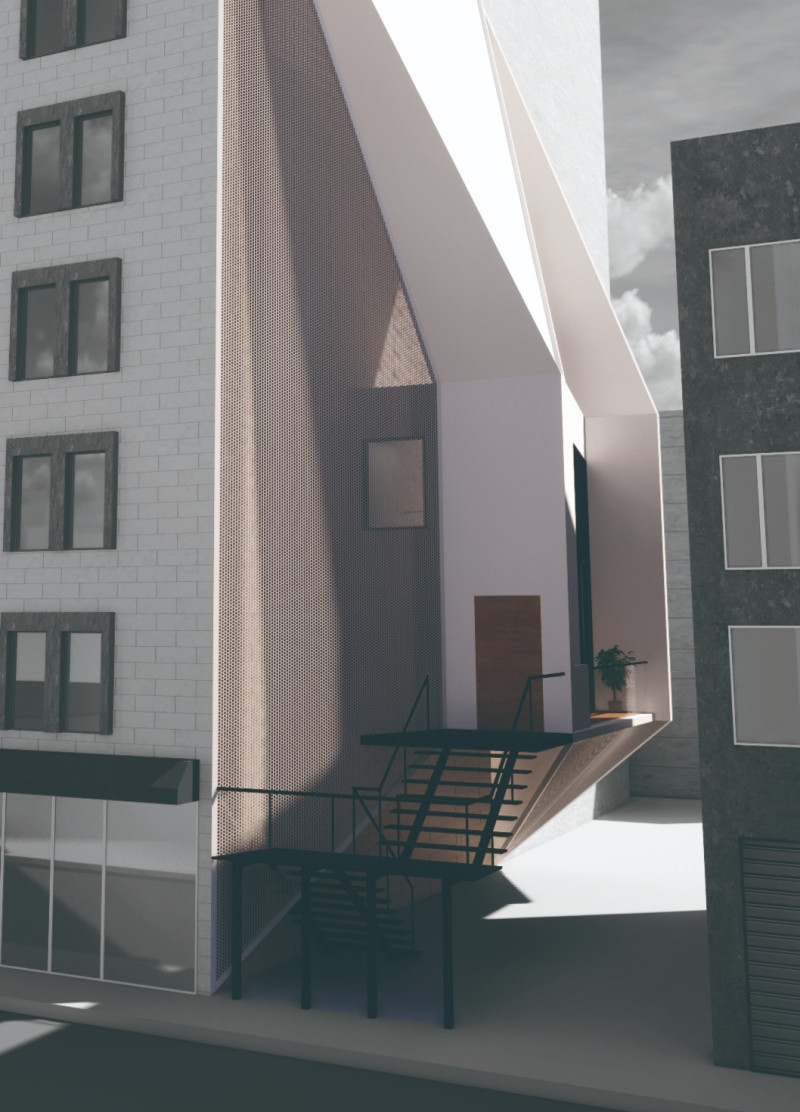5 key facts about this project
The design explores the challenges of urban development by integrating old and new structures. Situated within a changing city, it addresses the growing need for living spaces while respecting the historical value of existing buildings. The concept of symbiosis guides the design, creating a connection between heritage architecture and contemporary elements to form a cohesive whole.
Symbiosis in Design
The project highlights the relationship between old buildings and modern structures. It demonstrates how historical contexts can inform new designs. By focusing on adaptive reuse, the design shows that it is possible to create living spaces that enhance the character of an area. This principle emphasizes that new architecture can coexist with existing structures, adding depth to the urban experience.
Perforated Plate Integration
A key feature is the use of perforated plates in the design. These elements lighten the appearance of the attached structures, making them visually less imposing. The perforated design allows natural light to enter while reducing direct sunlight exposure. This helps maintain comfortable indoor temperatures. The interaction of light and space contributes to a pleasant living environment.
Sustainable Practices
Sustainability is an important aspect of the project. Integrated rainwater collection systems promote responsible resource use. This feature helps the buildings to connect with local environments. It reflects an understanding of ecological needs in urban settings. The design balances modern living with environmental responsibility, showing that buildings can work in harmony with nature.
Independent Energy Generation
The project also considers the generation of hydropower resources on-site. This approach reduces dependence on external energy sources, contributing to energy autonomy. The use of renewable energy solutions aligns with contemporary goals of sustainability. This aspect adds another layer of responsibility to the design, addressing pressing energy issues.
The effective blending of historical and modern elements creates a thoughtful space. Light filters through the perforated surfaces, casting patterns that change throughout the day, allowing occupants to experience a dynamic environment. This attention to detail enhances everyday life, inviting engagement with both the building and its surroundings.



















































